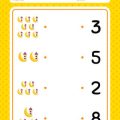Laying the Foundation: Understanding Tarot Basics
If you’re ready to start your journey into intuitive tarot reading, it’s important to first build a strong foundation. By understanding where tarot comes from, how the cards are structured, and which decks are popular in the United States, you’ll set yourself up for a more meaningful and confident practice.
Exploring the Origins of Tarot
Tarot cards have a fascinating history that dates back to the 15th century in Europe. Originally used as playing cards, they gradually evolved into tools for spiritual insight and self-reflection. In the U.S., tarot became popular during the 20th century as more people sought ways to connect with their intuition and personal growth.
The Structure of a Tarot Deck
A standard tarot deck has 78 cards, divided into two main sections: Major Arcana and Minor Arcana. Understanding these categories helps you interpret readings more effectively.
| Section | Description | Number of Cards |
|---|---|---|
| Major Arcana | Represents major life themes and archetypes (e.g., The Fool, The Lovers) | 22 |
| Minor Arcana | Focuses on everyday situations; split into four suits | 56 |
The Four Suits of the Minor Arcana
| Suit | Element | Symbolizes |
|---|---|---|
| Cups | Water | Emotions, relationships, intuition |
| Pentacles (or Coins) | Earth | Finances, work, physical health |
| Swords | Air | Thoughts, communication, conflict |
| Wands | Fire | Passion, creativity, action |
The Archetypes Within Tarot Cards
The Major Arcana cards each represent powerful archetypes—universal symbols that reflect different stages and experiences in life. For example, The Magician stands for manifestation and resourcefulness, while The Empress represents creativity and nurturing energy.
Popular Tarot Decks in the U.S.
If you visit any metaphysical shop or browse online stores in America, you’ll notice some decks come up again and again. Here are a few favorites:
- Rider-Waite-Smith Deck: Widely considered the standard for learning and interpreting tarot due to its clear imagery.
- The Wild Unknown Tarot: Known for its modern art style and animal symbolism.
- Morgan-Greer Tarot: A vibrant deck often chosen for its easy-to-read illustrations.
Selecting Your First Deck
You don’t have to pick the most famous deck—choose one that resonates with you visually and emotionally. Many beginners in the U.S. start with Rider-Waite-Smith because most guidebooks use it as a reference point.
Your Next Step: Getting Familiar with the Cards
Before diving into readings, spend time looking at each card individually. Notice colors, symbols, and how they make you feel. This will help strengthen your intuitive connection as you continue on your tarot journey.
2. Tapping Into Your Intuition
Why Intuition Matters in Tarot
When you’re learning tarot, it’s easy to get caught up memorizing card meanings. But truly powerful readings come from blending knowledge with intuition. In American self-help culture, trusting your gut is often seen as a key to personal growth and self-discovery. Developing your intuitive skills lets you read the cards more naturally and connect with deeper insights for yourself or others.
Practical Techniques to Boost Your Intuitive Skills
1. Create a Comfortable Space
Set up a spot that feels safe and peaceful, whether it’s your kitchen table or a cozy corner of your bedroom. Light a candle, play calming music, or add any items that help you relax—this helps signal your mind it’s time to tune in.
2. Practice Mindfulness Before Reading
Take a few deep breaths before you start a reading. Try a quick meditation or grounding exercise, like noticing five things you can see, four things you can touch, three things you can hear, two things you can smell, and one thing you can taste. This grounds you in the present moment so your inner voice comes through clearer.
3. Journal Your First Impressions
Before looking up traditional meanings, write down what jumps out at you when you see a card: colors, symbols, feelings, or even memories. Trusting these first impressions helps build your intuitive muscle over time.
| Technique | How It Helps | Try This |
|---|---|---|
| Body Scan | Notice physical sensations when seeing a card—do you feel tense or relaxed? | Pause after drawing each card and check how your body reacts. |
| Free Association | Say aloud or jot down the first word or image that comes to mind. | Don’t filter yourself—let ideas flow without judgment. |
| Visualization | Imagine stepping into the scene on the card. What do you notice? | Describe the setting and characters as if they’re real. |
4. Trust Your Gut Instincts
If an interpretation pops into your mind—even if it doesn’t match what the guidebook says—explore it! In American self-help culture, honoring your initial reactions is encouraged because they often reflect subconscious wisdom.
Tips for Building Trust in Your Intuition
- Practice regularly: The more often you listen to your inner voice, the easier it gets.
- Avoid overthinking: If you find yourself analyzing too much, take a step back and reconnect with how the card makes you feel.
- Reflect afterward: After each reading, note what felt right and what didn’t—over time, patterns will emerge.
- Create affirmations: Use positive statements like “I trust my intuition” before starting each session.
With practice and patience, tuning into your intuition transforms tarot from memorization to meaningful connection—helping you grow both as a reader and on your own journey of self-discovery.

3. Mastering Card Interpretations
Learning to read tarot cards intuitively is more than just memorizing what each card means. In American culture, there’s a strong focus on self-empowerment and personal insight—so let’s explore how you can interpret cards in a way that feels both authentic and meaningful.
Go Beyond the Guidebook
It’s helpful to start by knowing the traditional meanings of the cards, but don’t stop there. Try to look at the images and symbols on each card and ask yourself: What feelings or memories do they bring up for me? Trust your initial reactions—even if they’re different from what you’ve read in books. Your personal associations are a powerful tool in building intuitive readings.
Elements to Consider When Interpreting Tarot Cards
| Element | What to Look For | How It Helps |
|---|---|---|
| Symbolism | Colors, animals, objects, gestures | Sparks personal connections and deeper meanings |
| Card Placement | Where the card falls in your spread (past, present, future, etc.) | Adds context and clarifies timing or influence |
| Emotional Reactions | Your gut feeling when you see the card | Highlights what matters most right now for you or your querent |
Practice Noticing Patterns
If several cards in your spread share similar colors or themes, take note! In American-style intuitive reading, noticing these patterns helps you find messages that are especially relevant to your situation. For example, lots of blue might suggest communication is important right now.
Empower Yourself Through Interpretation
The heart of intuitive tarot is trusting yourself. When you interpret a card, ask: How does this apply to my life or question today? This process turns every reading into an opportunity for self-growth—a key value in American culture. Remember, you’re not just predicting the future; you’re discovering insights to help you move forward with confidence.
4. Developing Your Personal Tarot Practice
Building Rituals That Work for You
Creating a tarot practice that fits your life doesn’t have to be complicated or time-consuming. In American culture, where work-life balance is key, it’s important to find rituals that support your intuitive growth without adding stress. Start small—maybe lighting a candle, playing soft music, or sipping your favorite coffee before each reading. The goal is to set the mood and signal to your mind that it’s time to focus on yourself.
Sample Tarot Rituals for Busy Schedules
| Time Needed | Ritual Example |
|---|---|
| 5 Minutes | Breathe deeply, shuffle your deck, and pull one card for daily insight |
| 10 Minutes | Light a candle, journal one intention, then pull two cards and reflect |
| 20+ Minutes | Create a cozy space, meditate briefly, do a three-card spread, and write down your impressions |
Journaling Your Tarot Journey
Keeping a tarot journal helps you track patterns, deepen intuition, and notice how card meanings show up in your everyday life. You don’t need fancy notebooks—use an app, digital document, or simple notebook. After each reading, jot down the date, question (if any), cards pulled, and any feelings or insights. Over time, this will help you see progress and boost confidence in your intuitive skills.
Easy Tarot Journal Prompts
- What was my first thought when I saw this card?
- How does today’s card relate to what’s happening in my life right now?
- Did I feel drawn to any symbols or colors?
Designing Your Reading Environment
You don’t need a special room or expensive tools to read tarot intuitively. Make any space inviting by clearing clutter from a table, setting out your cards, and adding something comforting—like a favorite mug or blanket. Even if you share your living space or have limited time, these small touches can make tarot feel like a mindful escape.
Tips for Creating a Comfortable Space:
- If you’re short on space, use a portable tray or basket to keep your tarot supplies handy.
- Set aside “quiet time”—even five minutes in the morning or before bed—to connect with your cards.
Making Tarot Part of Your Self-Care Routine
Incorporating tarot into daily self-care supports emotional wellbeing and personal growth. Try pairing your readings with activities that already fit your routine: pull a card with your morning coffee or reflect on your day’s card before sleep. The key is consistency over perfection; even brief moments spent with tarot can help you tap into your intuition and bring more mindfulness into busy American lifestyles.
5. Connecting with the Tarot Community
Building your intuitive tarot reading skills isnt just a solo journey—connecting with others can make all the difference. Whether you’re new to tarot or looking to deepen your understanding, engaging with the American tarot community offers opportunities for growth, inspiration, and support.
Why Join the Tarot Community?
Sharing experiences and insights with others helps you learn faster, discover new perspectives, and stay motivated. Plus, it’s a great way to find friends who share your interest in tarot.
Ways to Connect Online
Many Americans are part of active online tarot networks where you can participate no matter where you live. Here are some popular options:
| Platform | How to Engage |
|---|---|
| Facebook Groups | Join groups like “Tarot Nerds” or “American Tarot Association” to share readings, ask questions, and join discussions. |
| Participate in subs like r/tarot to post your spreads, give feedback, and learn from others’ experiences. | |
| Follow tarot readers, share your own card pulls using hashtags like #tarotcommunity or #tarotreadersofinstagram. | |
| YouTube | Watch tutorials by American tarot creators and join live chats during readings or Q&A sessions. |
Connecting In-Person Across America
If you prefer face-to-face interactions, there are plenty of local opportunities:
- Meetup Groups: Search for tarot meetups in your city on Meetup.com—many cities have regular gatherings for practice and discussion.
- Metaphysical Shops: Visit local crystal shops or bookstores that offer tarot classes, workshops, or community events.
- Pagan Pride Events & Fairs: Attend festivals and fairs where tarot readers gather; these events often include beginner-friendly workshops.
Tips for Engaging with the Community
- Share Your Readings: Post your spreads (with personal info removed) for feedback from others—this helps build confidence and insight.
- Give Feedback: Comment on others’ posts with supportive and constructive thoughts; teaching is a powerful way to learn.
- Collaborate: Pair up with another reader for practice sessions or group studies to exchange ideas and grow together.
- Stay Respectful: Remember that everyone’s tarot journey is unique; be kind and open-minded when interacting in any community space.
Your Next Steps
Dive into one or two online communities or look up local events near you. Engaging with fellow tarot enthusiasts will not only accelerate your learning but also make your intuitive journey more enjoyable and rewarding as you work toward mastering intuitive tarot reading skills.


